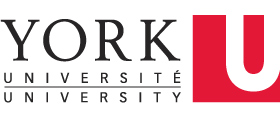(Also available as a PDF, specially formatted for printing and reading: Academic Search Engine Optimization![]() )
)
You want your article to be read. Of course the first and most important thing is to write a good article and get it published in a good journal.
Once that’s done, here are some things you can do to make the article easy for others to find, which means more people will see it and be more likely to read it and cite it.
(If you want to make your web site, or your project’s, more visible in search engines, see Search Engine Optimization: Advice for York Researchers. If you have any questions about either kind of SEO, get in touch with William Denton, web librarian.)
Understand Google Scholar
Google Scholar indexes scholarly material from proprietary sources such as subscription journals and grey literature from the open web. It can be easier to search there than to go into several different databases.
Soon after your article is published, Google Scholar will see it. Here is what’s known of how Google Scholar decides its search rankings, and why your article ends up where it does in the results:
- Words in the title are weighted heavily.
- It relies heavily on citation counts. The more an article has been cited, the higher it ranks.
- However, recent articles are weighted more than older ones. This helps counter the effect of citation counts.
- Journal name and author names also count for a lot.
- Words in bitmapped graphics (such as JPEGs and PNGs) are not indexed. Use vector graphics and plain text (e.g. for captions) so that Google Scholar can read the words.
- Google Scholar does not seem to base its rankings on the frequency of a search term in an article.
- Multiple versions of an article, (e.g. on your home page and in YorkSpace) will be grouped together. Preprints, postprints and final journal copies are also grouped.
(Source: Jöran Beel, Bela Gipp and Erik Eilde. “Academic Search Engine Optimization (ASEO): Optimizing Scholarly Literature for Google Scholar & Co.” Journal of Scholarly Publishing 41.2 (2010): 176-190.)
Make it open access
OASIS (Open Access Scholarly Information Sourcebook) explains what open access is, how it works, why it works, and how to get started.
Open access is different across disciplines. To find out more, see York’s Scholarly Communications Initiative or talk to Andrea Kosavic, Digital Initiatives Librarian.
Put it in YorkSpace
Google Scholar knows that YorkSpace is the institutional repository at a research university. It gives high weight to articles stored there. The YorkSpace Deposit Toolkit explains everything you need to know to add your work, with instructional guides, videos and documentation
Contact the library’s digital initiatives team at <diginit@yorku.ca>.
Announce it
- Update your personal web site with a link to it. Ask your co-authors to do the same.
- Post about it on Twitter, Facebook, and other social networking sites.
- Post about it on Academia.edu, Mendeley, and other academic networking sites. Mendeley’s Academic SEO—Market (and Publish) or Perish is worth reading.
- Talk to your faculty communications officer.
- York U Media Relations is there to help you get media coverage. Their Media Guide explains how they can write about you in YFile and also issue news releases and inform the media about your work.
- Talk to Knowledge Mobilization about writing a Research Snapshot of the work.
Track your citations
- Google Scholar Citations tracks your articles, graphs citations over time and calculates h- and i10-indexes.
- Web of Science has a Cited Reference Search.
- Scopus is particularly strong in science.
- Publish or Perish uses Google Scholar for citation counts and to determine h- and g-indexes.
- Journals with article DOIs can use CrossRef’s Cited-By Linking. (Ask the editors.)
- Download statistics from YorkSpace are available.
- YUL’s Guide to Cited Reference Searching has more.
